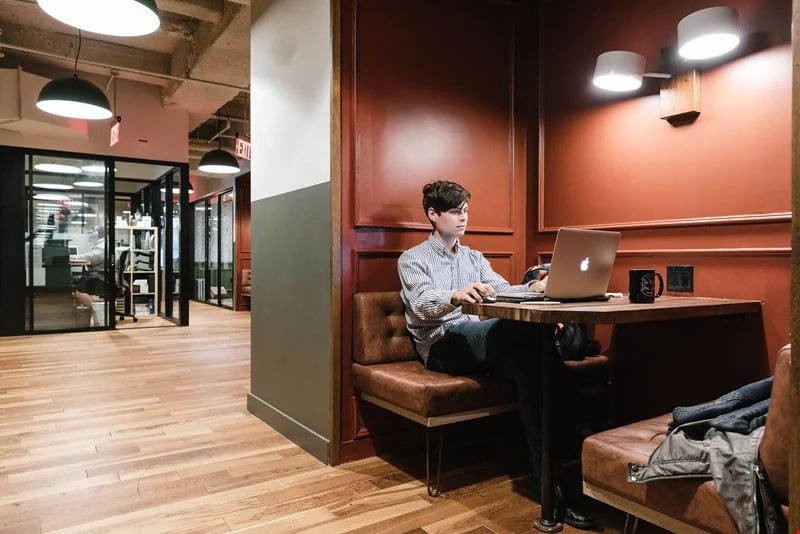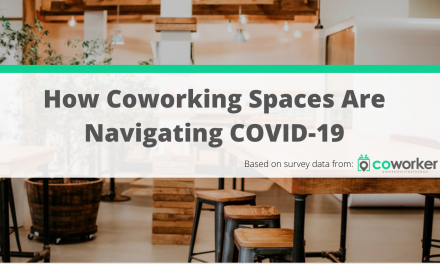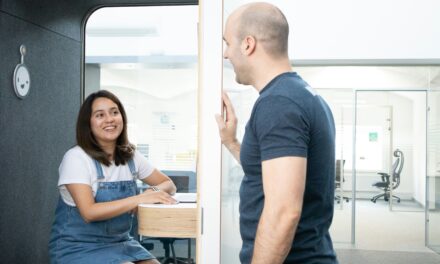Coworking spaces were built on the promise of connection, creativity, and community. They disrupted the traditional office model by offering flexible, open environments where freelancers, startups, and remote workers could thrive. But as these spaces evolve, a new player is transforming how they function: artificial intelligence.
AI isn’t just about robots or chatbots anymore. It’s woven into the fabric of modern workplaces, from personalized lighting systems to predictive analytics dashboards. And in coworking environments, where flexibility and adaptability are paramount, AI is proving to be more than just a buzzword. It’s becoming a cornerstone of the experience.
So, how exactly does AI enhance collaboration and boost efficiency in coworking spaces? Let’s explore the practical applications, subtle shifts, and exciting future possibilities.
The Smart Space Revolution
Picture walking into your coworking space, and everything is perfectly tailored to your preferences. The desk near the window you love is already reserved. The ambient lighting adjusts to your previous settings. The coffee machine knows your order. This isn’t sci-fi; it’s what AI-driven coworking can look like.
With smart sensors and machine learning algorithms, coworking spaces can now understand usage patterns, optimize resources, and personalize environments. AI can track which rooms get used most often, how many people are on-site at any given time, and which amenities see the most demand. This data helps space managers make better decisions about layout, equipment purchases, and staffing levels.
Beyond comfort, smart environments foster productivity. Lighting and temperature are adjusted based on occupancy and individual preferences. Noise-canceling systems can be activated during high-concentration hours. AI can even help monitor air quality and suggest break times when cognitive load is high.
Facilitating Better Human Connections
One of the defining features of coworking spaces is the opportunity to network. But let’s be honest: striking up a conversation with a stranger isn’t always easy, especially when you’re deep in a client deadline or juggling Zoom calls.
AI also thrives on real-time data feed management—processing continuous streams of input from sensors, apps, and usage logs to make smart, dynamic decisions. These feeds inform everything from occupancy predictions to system maintenance alerts.
It’s not about forcing interaction—it’s about making it easier to find value-driven connections. AI gives members subtle nudges that lead to more meaningful engagement, without the awkward introductions.
Streamlining Daily Operations
One of AI’s strongest suits is cutting through administrative clutter. Managing bookings, handling maintenance requests, processing invoices—all of this can be streamlined with intelligent automation.
Imagine a chatbot that not only helps you reserve a conference room but also recommends the best time based on your productivity patterns. Or an AI system that automatically detects when a printer is low on ink and sends a restock request before anyone notices. Even better, tools that learn from member behavior and optimize cleaning schedules to reduce disruption during peak working hours.
These automations aren’t just for convenience. They allow community managers to focus more on building a vibrant coworking culture instead of getting bogged down by routine tasks.
Enhanced Resource Management
Coworking spaces thrive on flexibility, but that often creates challenges in resource allocation. Who gets the corner office for a day? When should the HVAC system go into energy-saving mode? How do you balance high-traffic days with quieter periods?
AI brings clarity to these decisions. Through predictive analytics, space managers can forecast demand, anticipate peak usage, and adjust accordingly. It can even help determine the best pricing models based on member behavior and space utilization.
And sustainability isn’t left out. AI can monitor energy consumption and identify inefficiencies, helping coworking spaces reduce their carbon footprint while saving on costs. The result: a smarter, leaner, and more sustainable operation.

Rethinking Member Experience
Great coworking spaces don’t just provide desks and Wi-Fi—they create experiences. AI helps elevate that experience in subtle but powerful ways.
Let’s take new member onboarding and them learning the ropes as an example. A new member might receive a tailored welcome tour through an app, complete with AI-generated recommendations for networking, available amenities, or preferred workstations. Virtual assistants can field FAQs and offer guidance 24/7. Members can set personal productivity goals and receive gentle nudges or customized focus sessions based on their habits.
Feedback loops also improve dramatically. Rather than relying on quarterly surveys, AI can gather real-time sentiment through passive data and offer immediate insights. If a member frequently relocates due to noise, the system can flag this and suggest quieter zones in the future.
Futureproofing the Workplace
Coworking isn’t static. The demands of modern workers are fluid, and spaces need to evolve quickly. AI enables this agility, not just in daily workflows, but in long-term strategy and member experience design.
Need to test out a new layout before moving desks and whiteboards? AI can simulate traffic flow, predict bottlenecks, and even suggest optimal pathways for natural movement. Curious whether a new pricing tier will drive more revenue? Algorithms can crunch historical data and model member responses before you commit.
Thinking about launching a wellness program, silent work zone, or new service tier? Let AI pinpoint your most engaged members, predict adoption rates, and flag any potential friction points.
Here are just a few ways AI supports futureproofing in coworking environments:
- Layout and space planning: Predicts how members move through space and adjusts accordingly.
- Pricing and service modeling: Simulates the effects of new pricing models or service additions.
- Event and program recommendations: Tailors suggestions based on member interests and attendance history.
- Feedback-driven design changes: Identifies emerging pain points using sentiment analysis and behavioral tracking.
- Sustainability forecasting: Assesses the environmental impact of design or operational shifts.
This level of foresight extends far beyond logistics. As AI tools integrate with wearable tech, AR/VR experiences, and even real-time biometric feedback, coworking spaces will evolve into ecosystems that don’t just respond to change—they anticipate it. The next generation of coworking will be intuitive, responsive, and incredibly personalized.
The Human Element Still Matters
While AI can power the backend of coworking spaces and enhance many front-end experiences, the human element is irreplaceable. Empathy, community-building, and creative inspiration still come from real people.
What AI does best is augment. It lightens the load, connects the dots, and sharpens decision-making. When used thoughtfully, it becomes a quiet partner in the background—making the space feel smoother, smarter, and more in tune with its members.
The coworking revolution isn’t over. It’s just entering its next chapter. And with AI as part of the story, the future looks more connected, efficient, and human than ever.









